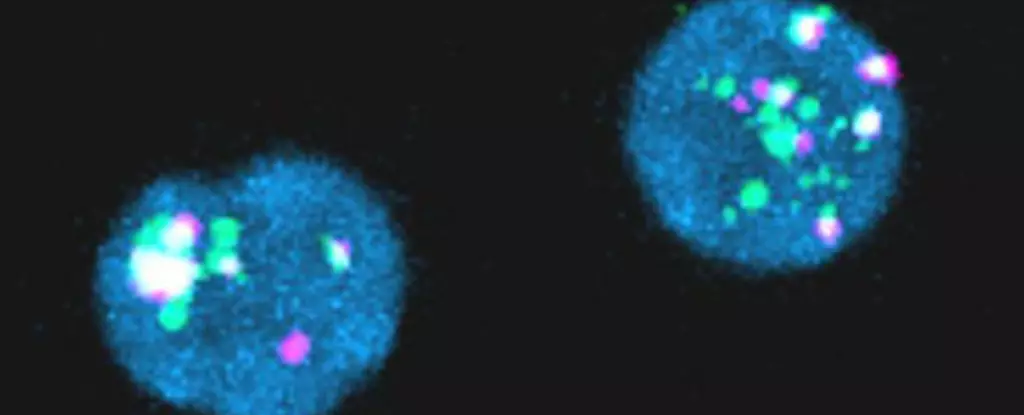Human immunodeficiency virus (HIV) has long been recognized by virologists as a notoriously elusive virus, capable of hiding within our chromosomes and persisting even during treatment. Recent studies have discovered that fragments of the HIV genome can remain inside immune cells, potentially causing harm to the immune system.
Antiretroviral drugs have been the primary treatment approach for HIV, effectively suppressing the replication of the virus within immune cells. However, these drugs do not completely eliminate all traces of viral RNA from immune cells, as revealed by two separate studies. These fragments of viral RNA are not infectious but could have detrimental effects on the immune system.
In one study, researchers examined blood samples from 18 individuals undergoing HIV treatment. Using fluorescent RNA probes, they discovered that 14 of the participants had reservoirs of viral RNA in their immune cells. Additionally, seven individuals had viral proteins, including p24, which is utilized in diagnostic tests for HIV. The larger the reservoir of HIV genetic material, the more pronounced the immune response against the virus.
The long-term consequences of persistent immune activity in individuals with HIV are still uncertain. It is unclear whether this activity is beneficial, serving as a reminder for the immune system to remain vigilant, or detrimental, leading to excessive strain on T cells. One possible impact of junk RNA from HIV is inflammation, which can persist despite antiretroviral therapy. This inflammation has been associated with various negative effects, such as accelerated cardiac disease, frailty, and premature osteoporosis.
Another study confirmed the presence of junk viral RNA within immune cells of individuals undergoing HIV treatment. Moreover, this RNA was found to interrupt the development of CD8+ T type immune cells, which play a crucial role in combating HIV infection. These findings highlight the pathophysiological relevance of viral RNA fragments and their potential contribution to the harmful effects of immune activation.
While the primary focus of HIV cure research remains on eliminating the replication-competent HIV reservoir, these studies emphasize the significance of addressing other fractions of the HIV reservoir. By doing so, researchers hope to mitigate the deleterious effects of immune activation and potentially improve the overall health outcomes for individuals living with HIV.
The persistence of HIV within immune cells, in the form of viral RNA fragments, sheds light on the complexities of HIV infection and treatment. While antiretroviral drugs effectively suppress viral replication, they do not eliminate all remnants of the virus. Further research is needed to fully understand the implications of persistent immune activity and the potential consequences for individuals living with HIV. By unraveling the mysteries of HIV’s sleeper-like behavior, scientists aim to develop more effective strategies for combatting this challenging virus.


Leave a Reply